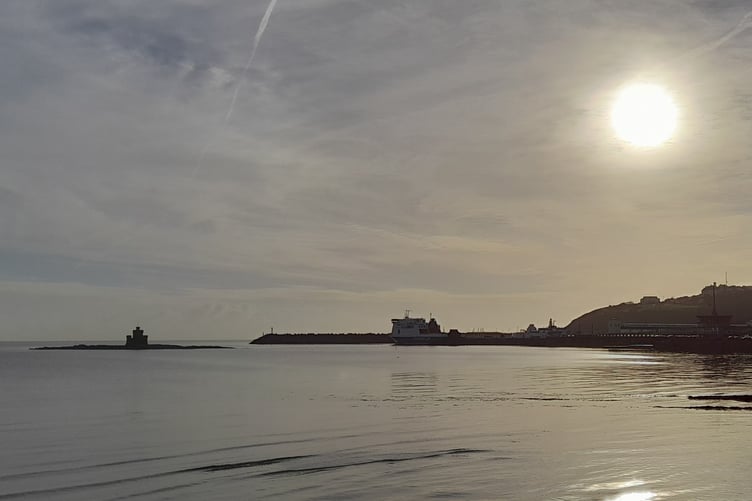In this month’s Manx Wildlife Trust column, Lara Howe takes a look at the Manx Marine Nature Reserve of Douglas Bay.
Douglas Bay Marine Nature Reserve (MNR), located on the east coast next to our capital, is only 4.6km2 but it is a surprisingly diverse underwater environment.
From rocky reefs, cobbles, sand and mixed substates, it provides a home for a variety of species, including some rare inhabitants, and supporting many others.
It is helped by the fact that the bay was initially closed to scallop fishing in 2008 before it was designated a marine nature reserve in 2018. The aim of the closure was to provide a supply of larvae for fishing grounds outside of the area, predominantly stocking the scallop beds to the south.
The added benefit of this measure was that it safeguards the seabed, allowing more fragile species to grow. The bay continues to provide commercial pot fishing for crabs and lobsters, along with recreational angling.
Among the more delicate and unique inhabitants of the bay are Beaumont's nudibranch, a small but striking sea slug, with its long cerata (projections) which it uses to breathe, can be found near its prey, the translucent nodding hydroid.
Besides the Isle of Man, the nudibranch is only recorded in Northern Ireland, Scotland and Norway. These species highlight the importance of having areas closed off from mobile disturbance.
Due to their structural complexity with their cracks, fissures, crevices and overhangs, the rocky reef areas of the bay provide a habitat for a variety of seaweeds and other species, such as sponges, anemones and urchins.
Many sharks utilise the area during the herring spawning season, coming to feed on the large shoals and on occasion the water can be seen to turn white from all the spawn. The sizable Minke whale can also be seen there in the Autumn feeding.
One of the charismatic species observed in the bay and also the harbour is the black Guillemot. These birds nest in the harbour walls and travel out into the bay to feed on fish.
Manx Wildlife Trust, as part of their ‘Action for Wildlife’ project, has in 2024 installed a series of nest boxes in the harbour to encourage more birds to nest there. For more information about MWT Action for Wildlife Projects, please go to https://www.mwt.im/action-for-wildlife
Similarly, the intertidal area of the bay supports many species, such as beadlet anemones, scorpion fish, shore crabs, seaweeds, to name but a few.
The bay ultimately provides a wonderful respite from busy city life and a walk along the promenade or the harbour can do wonders for the spirit and quiet a busy mind. Next lunch time, why not take a stroll along the sea front and see if you can spot anything?
For more information about the reserve or to download the ID guide or leaflet, please go online to either https://www.gov.im/MNR or https://www.biosphere.im/news/marine-mondays-douglas-bay

.jpeg?width=209&height=140&crop=209:145,smart&quality=75)

.jpeg?width=209&height=140&crop=209:145,smart&quality=75)
